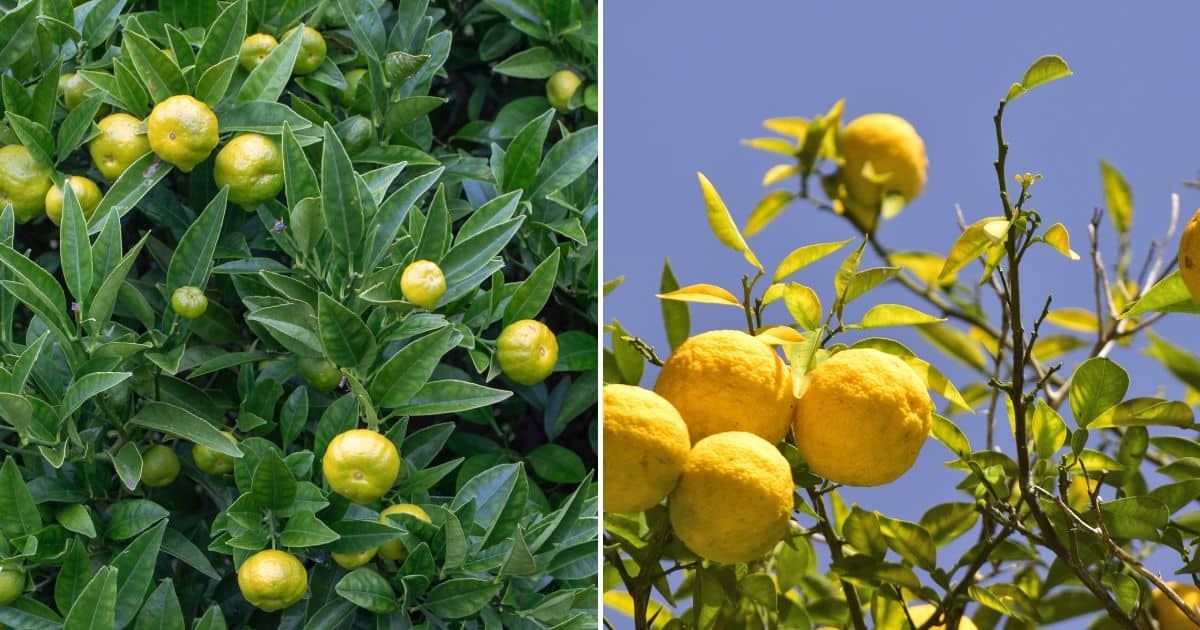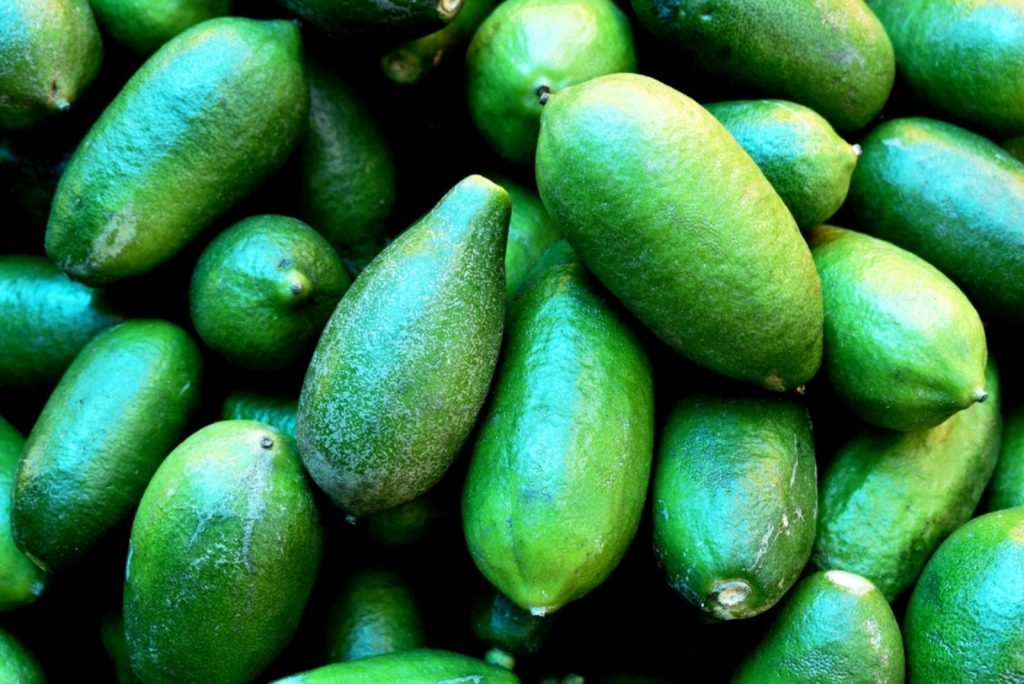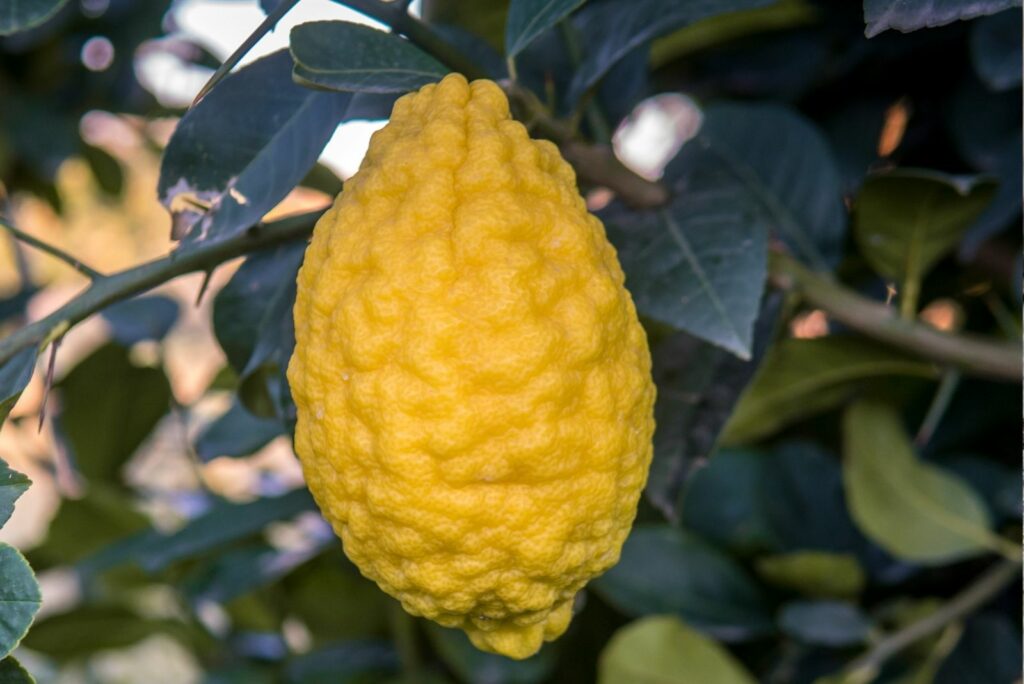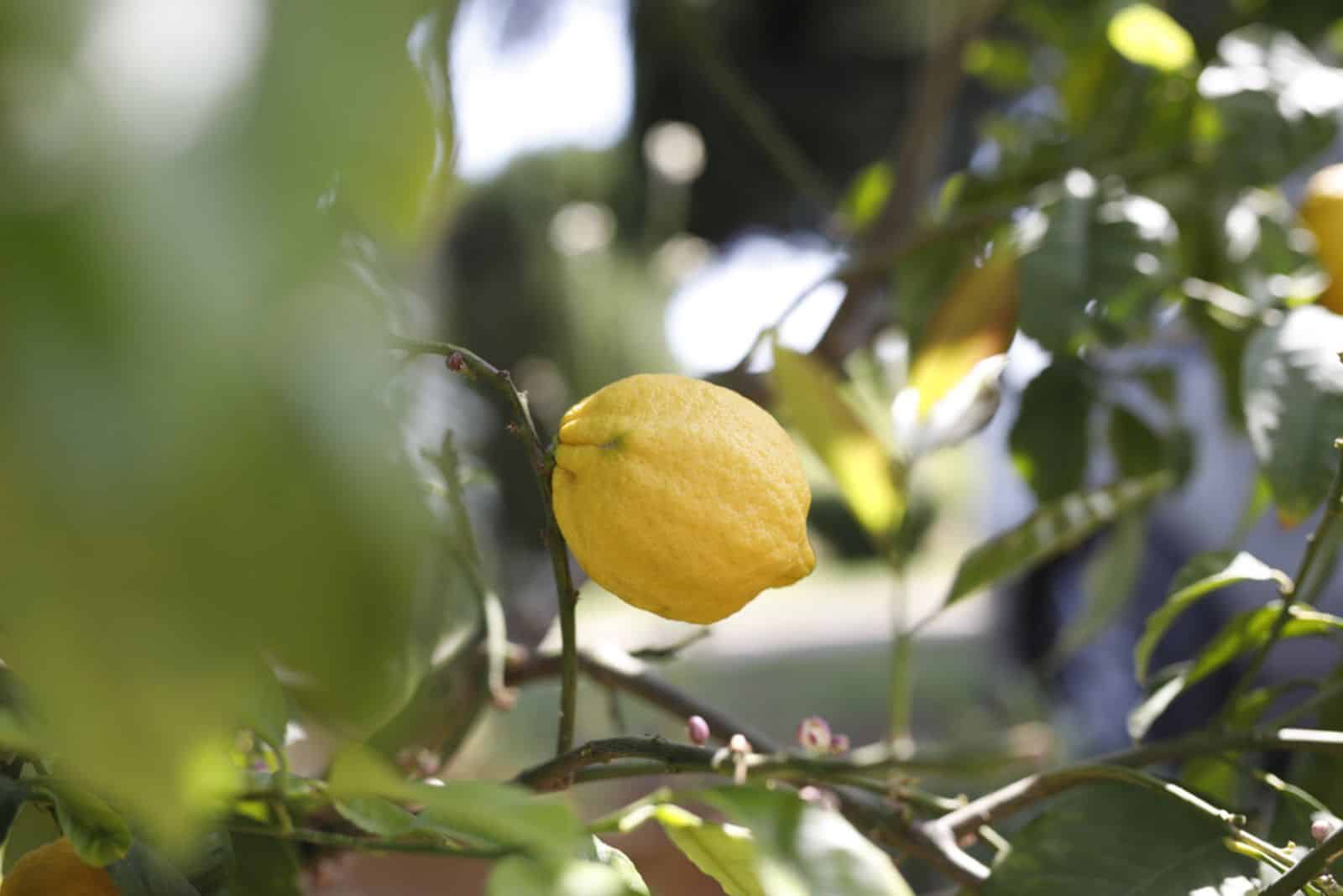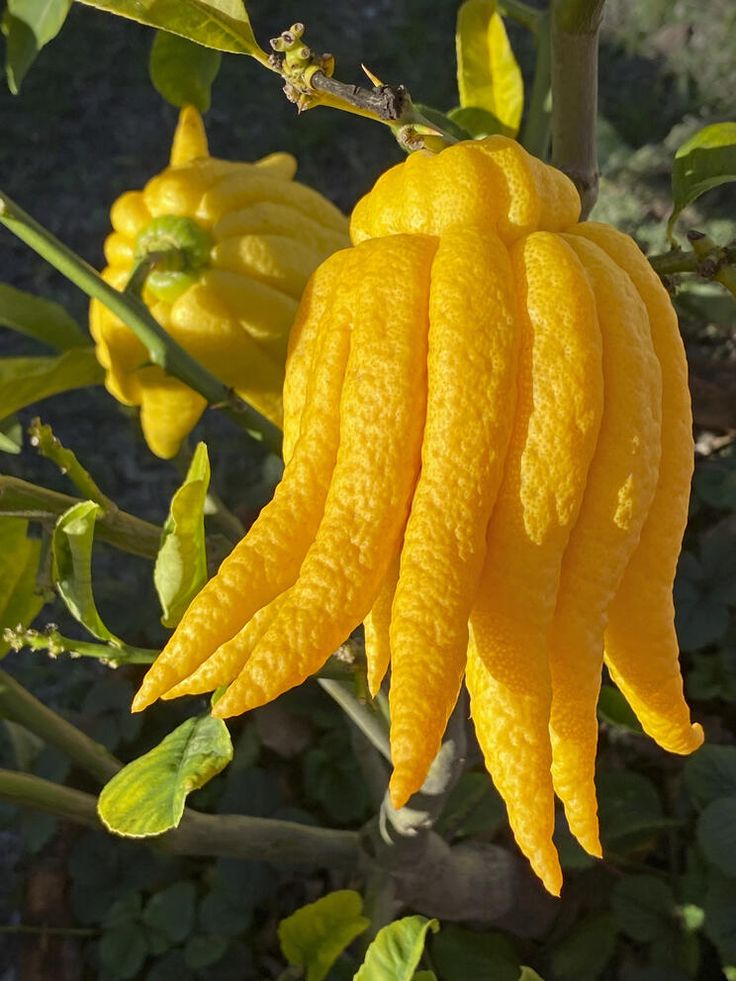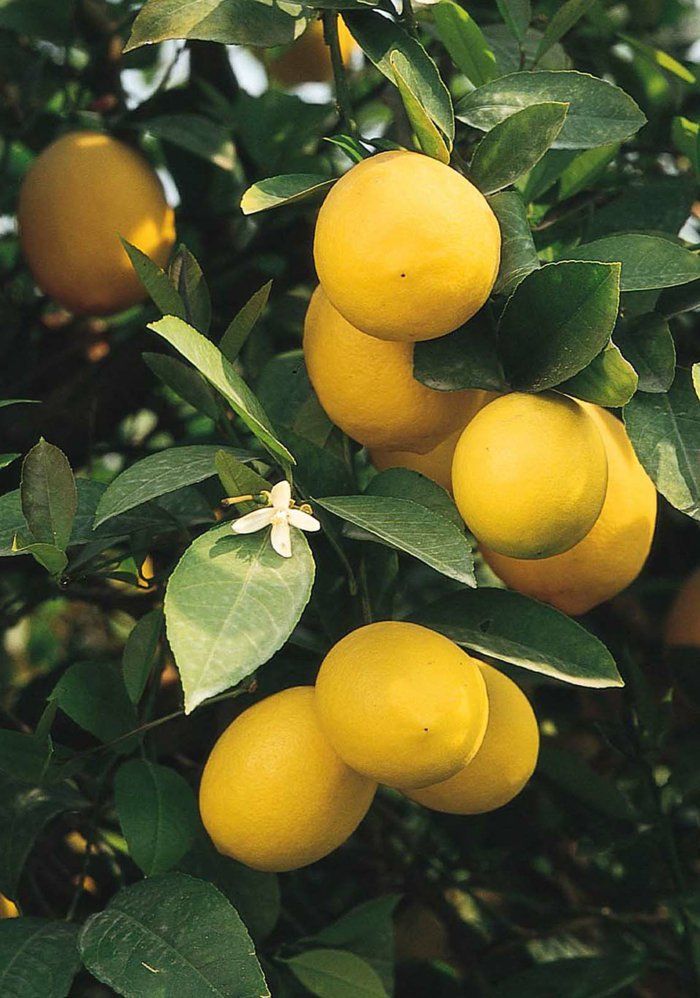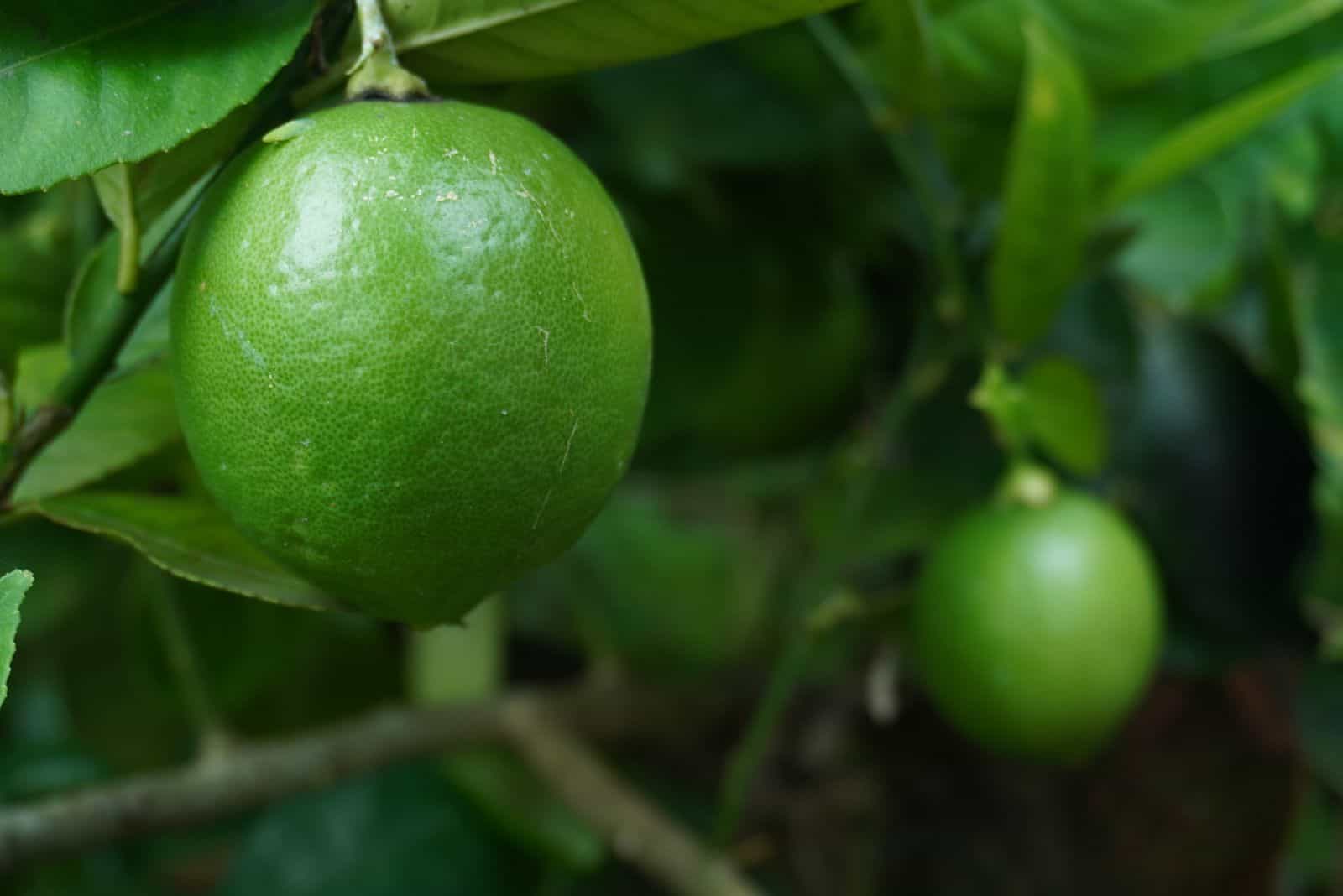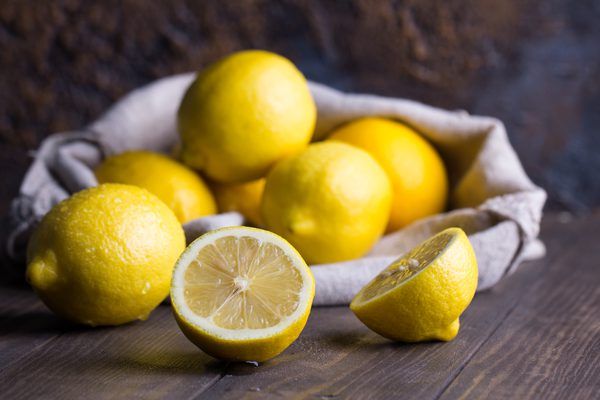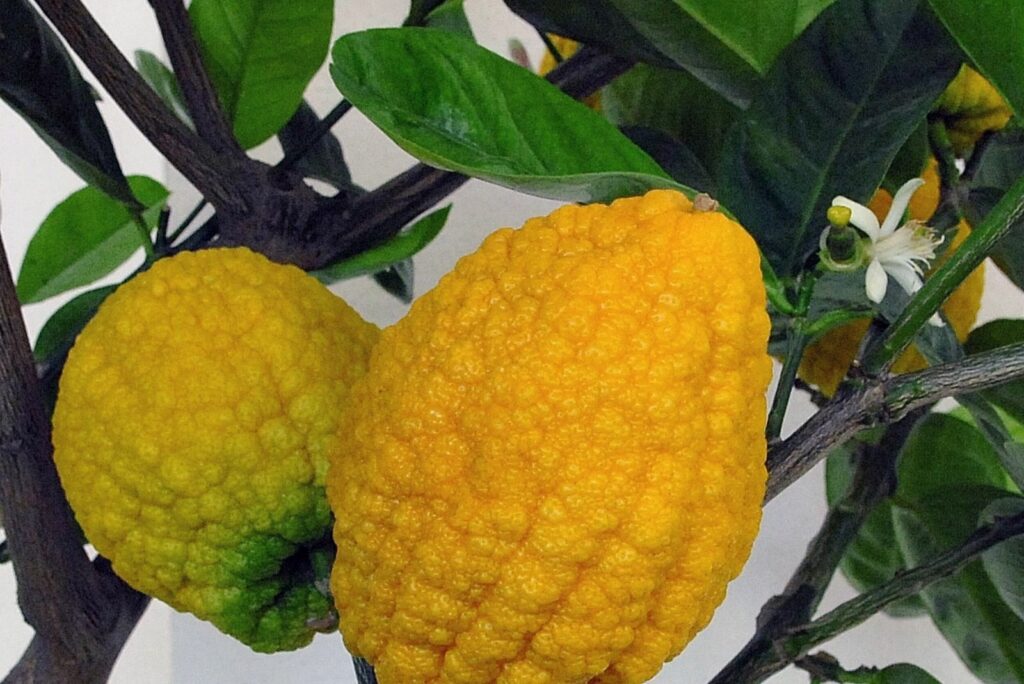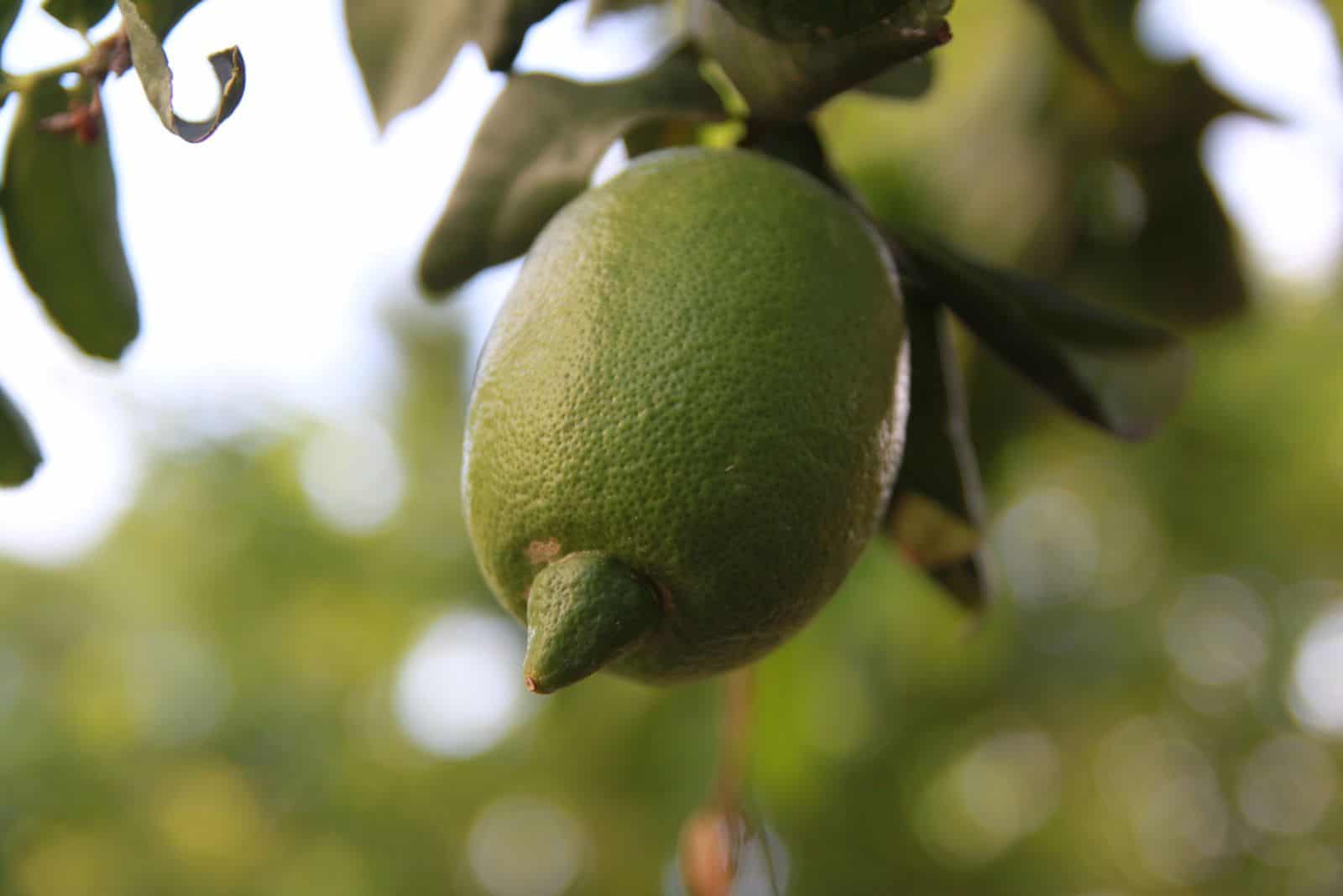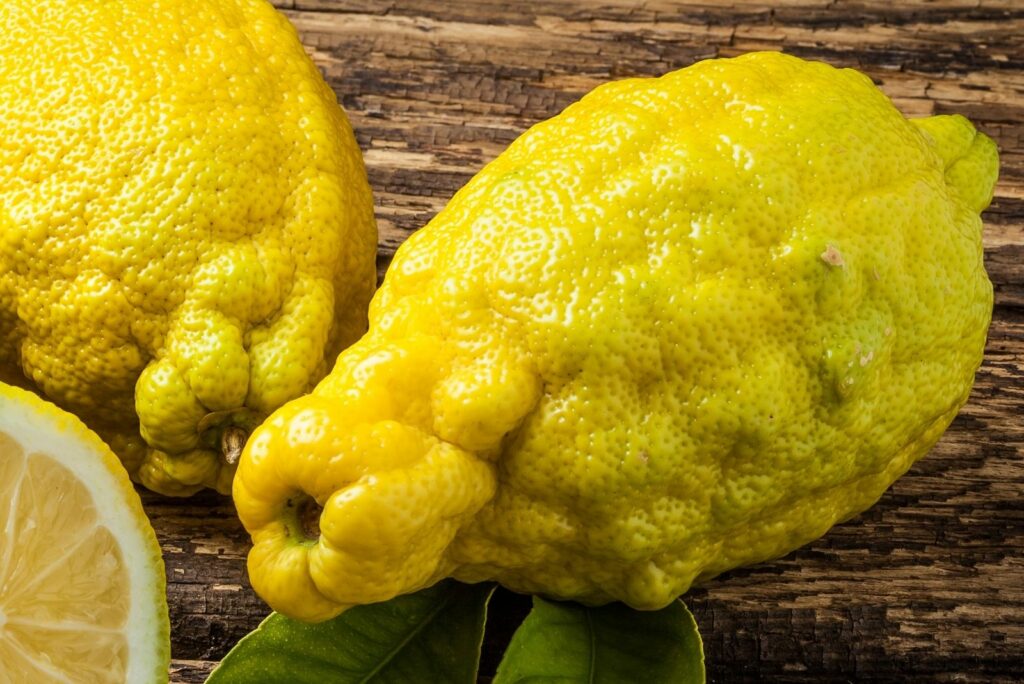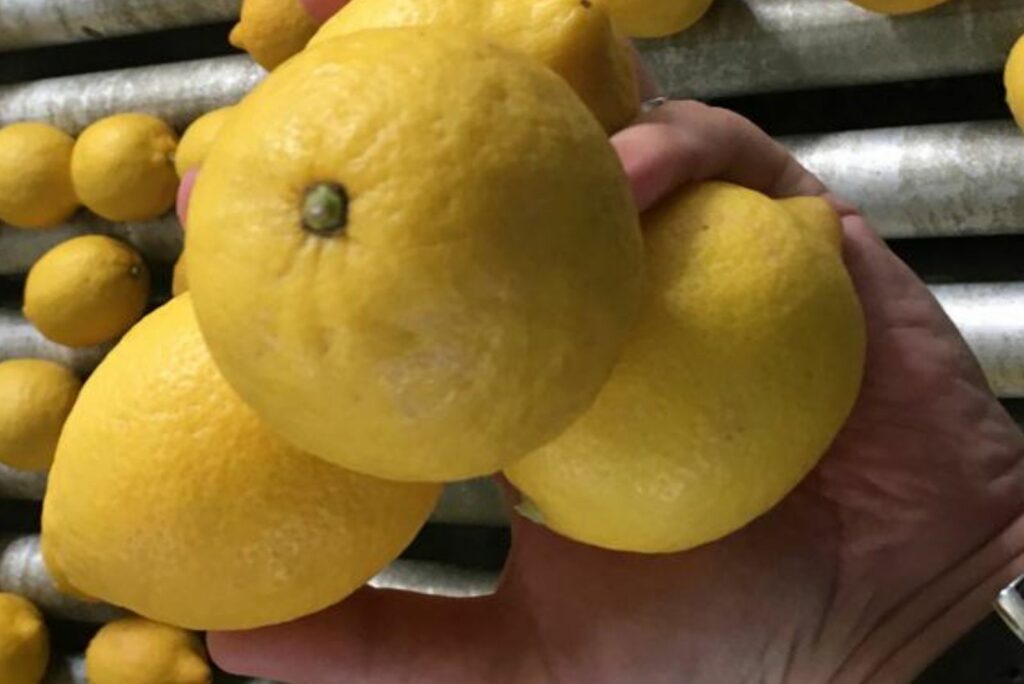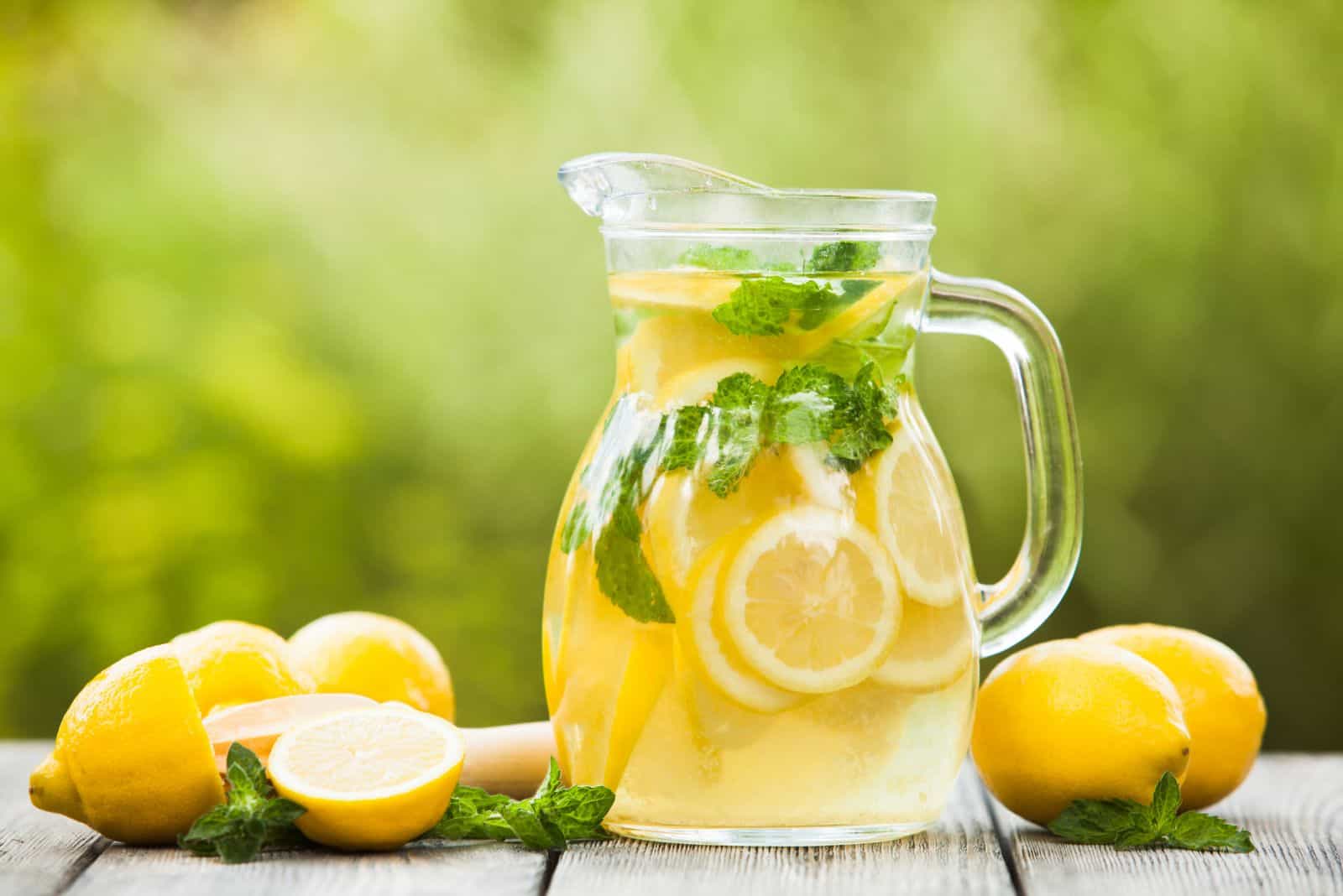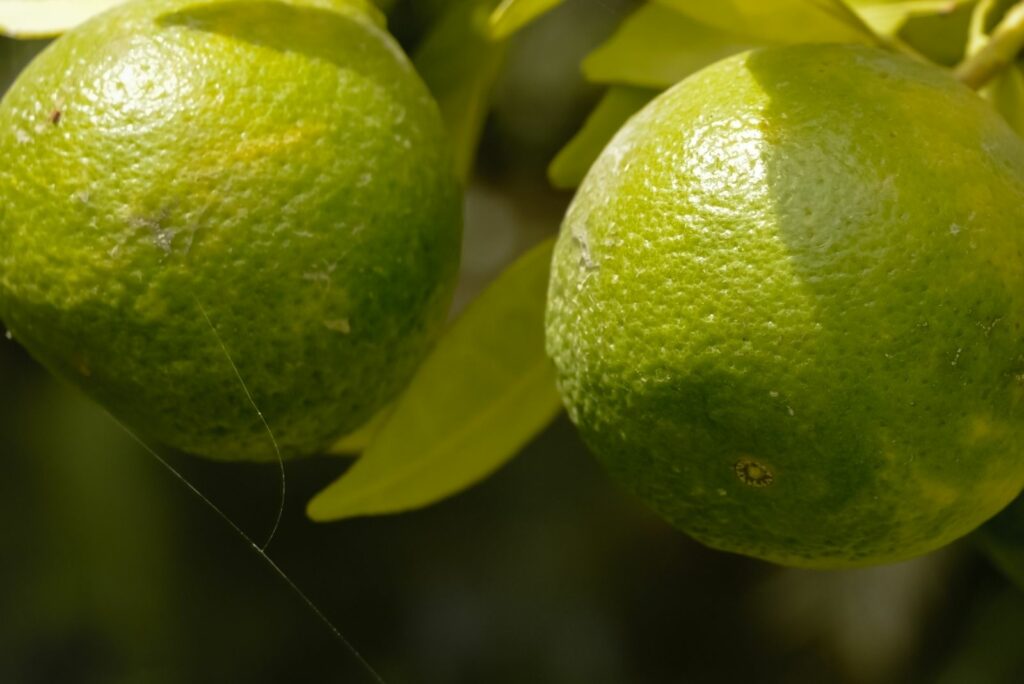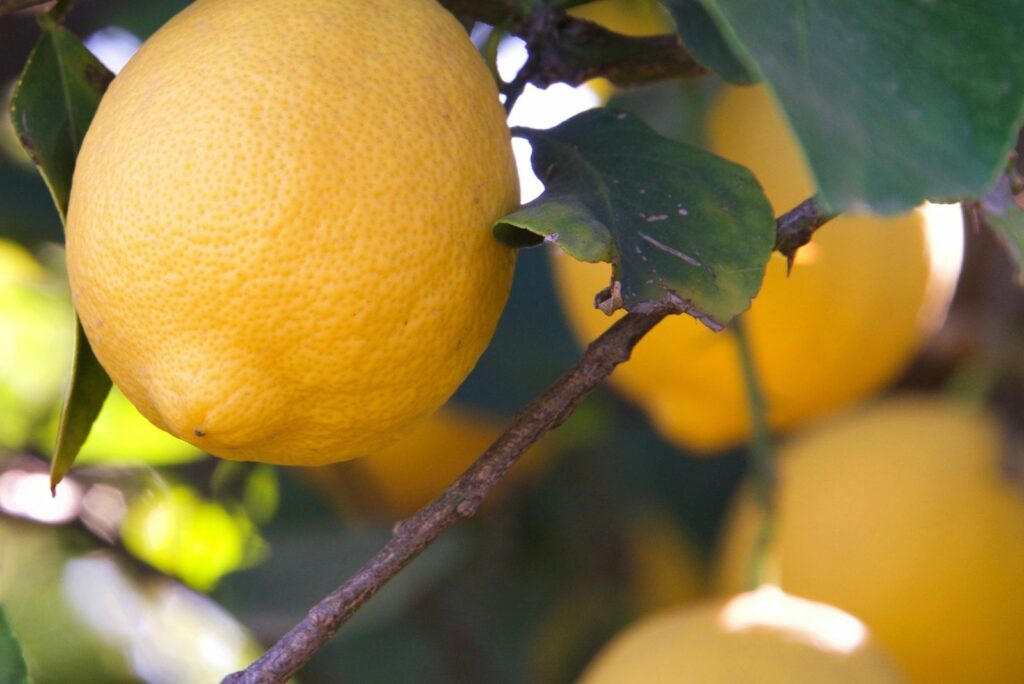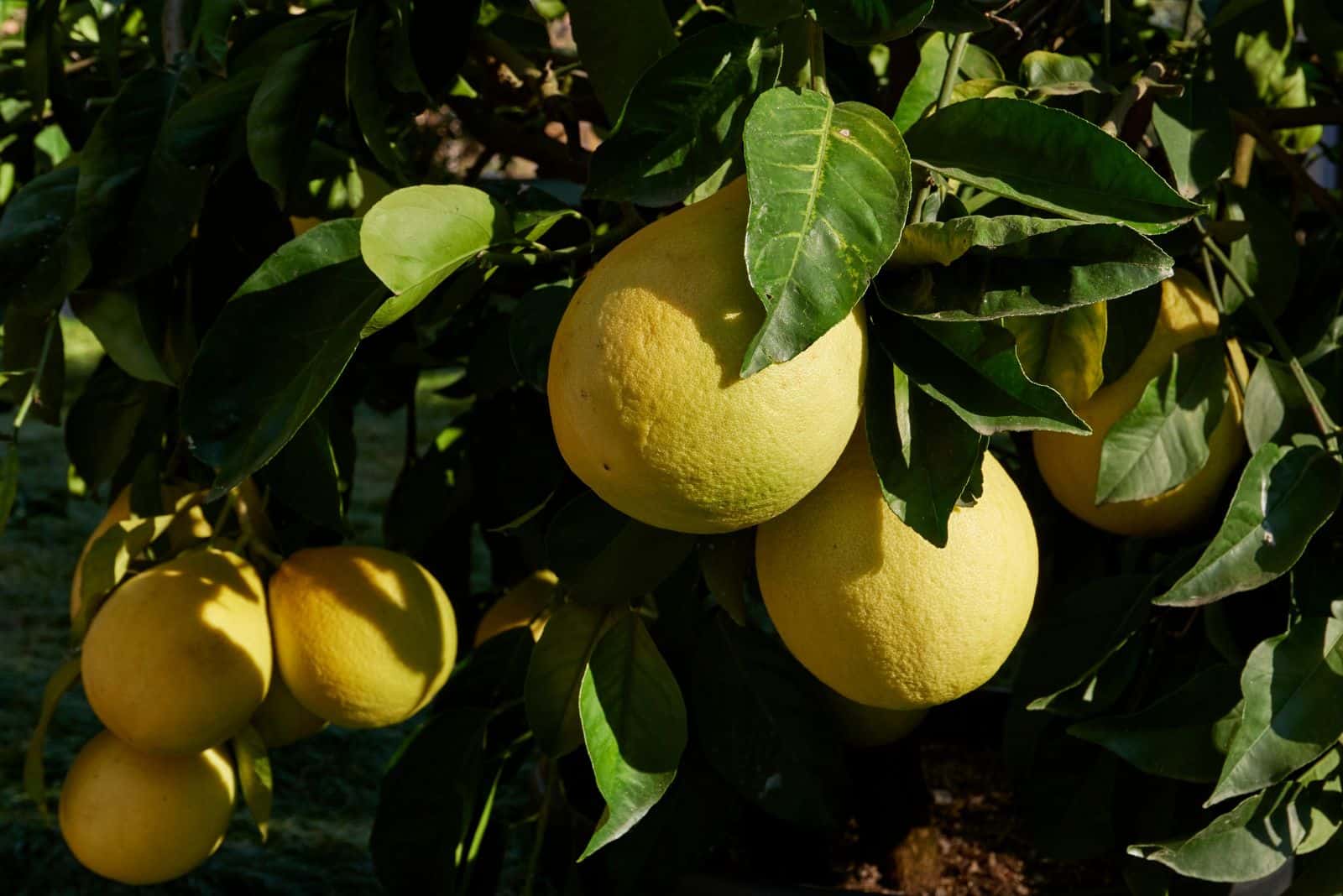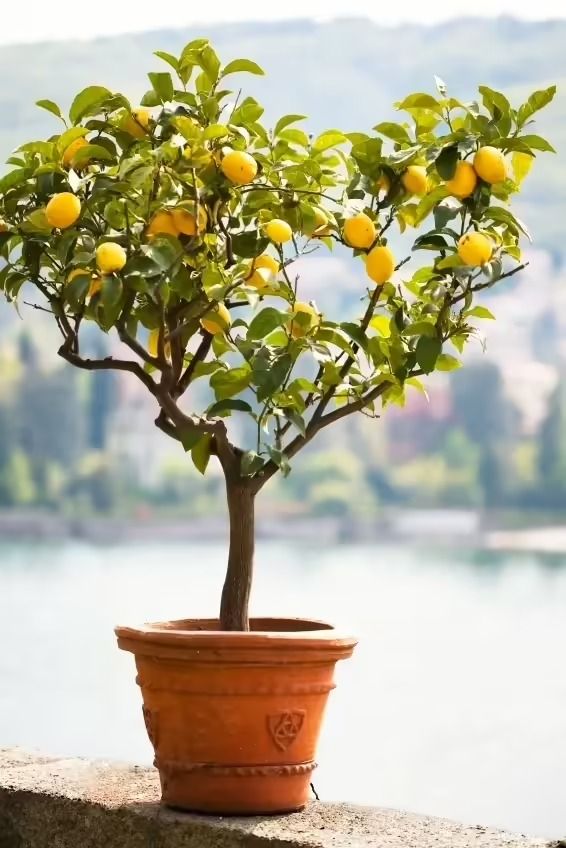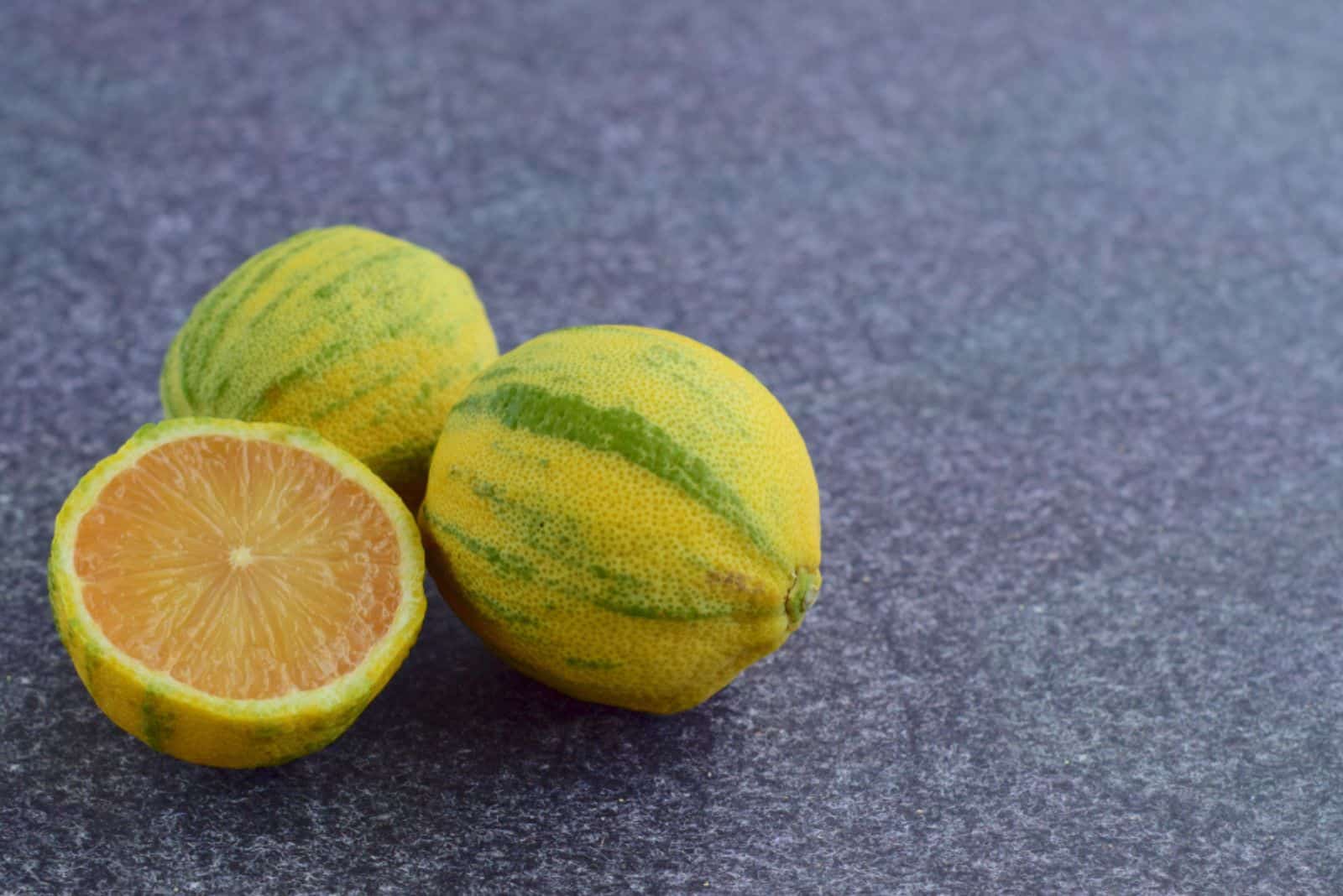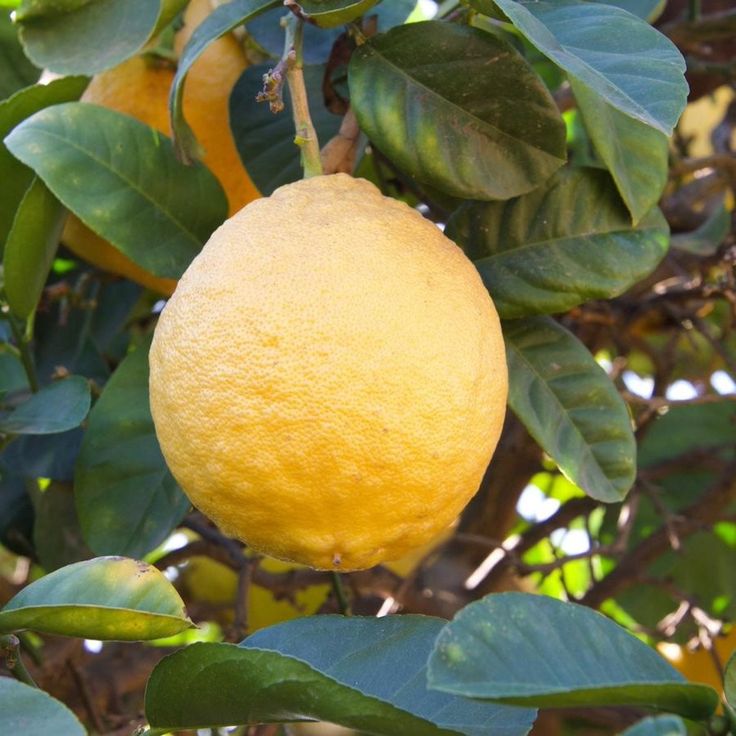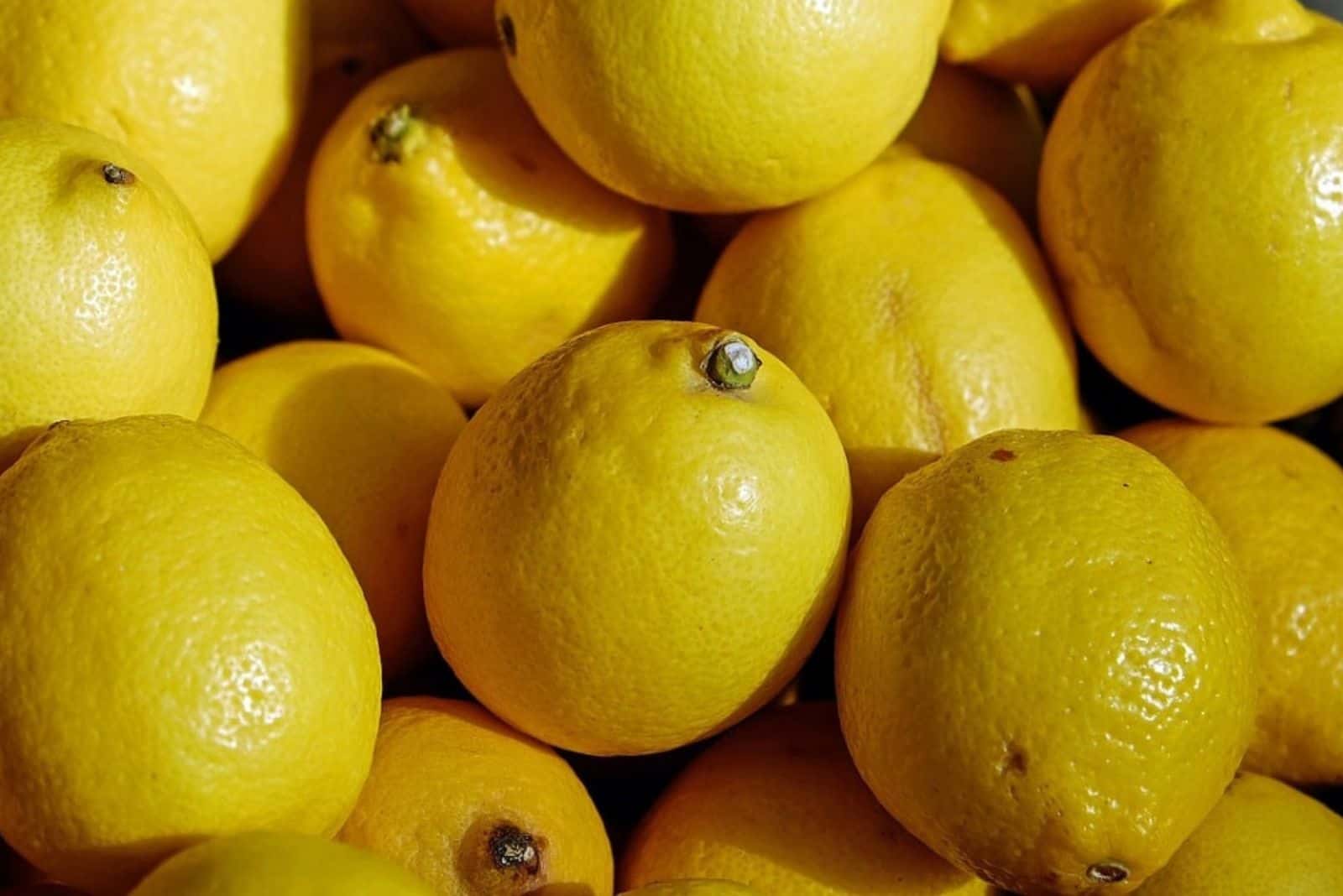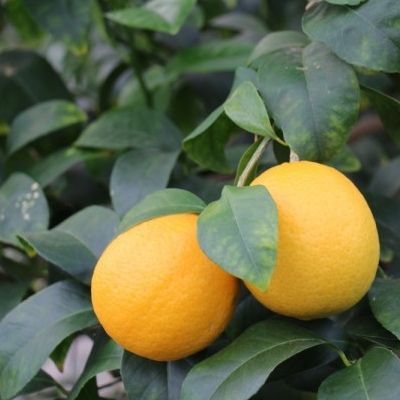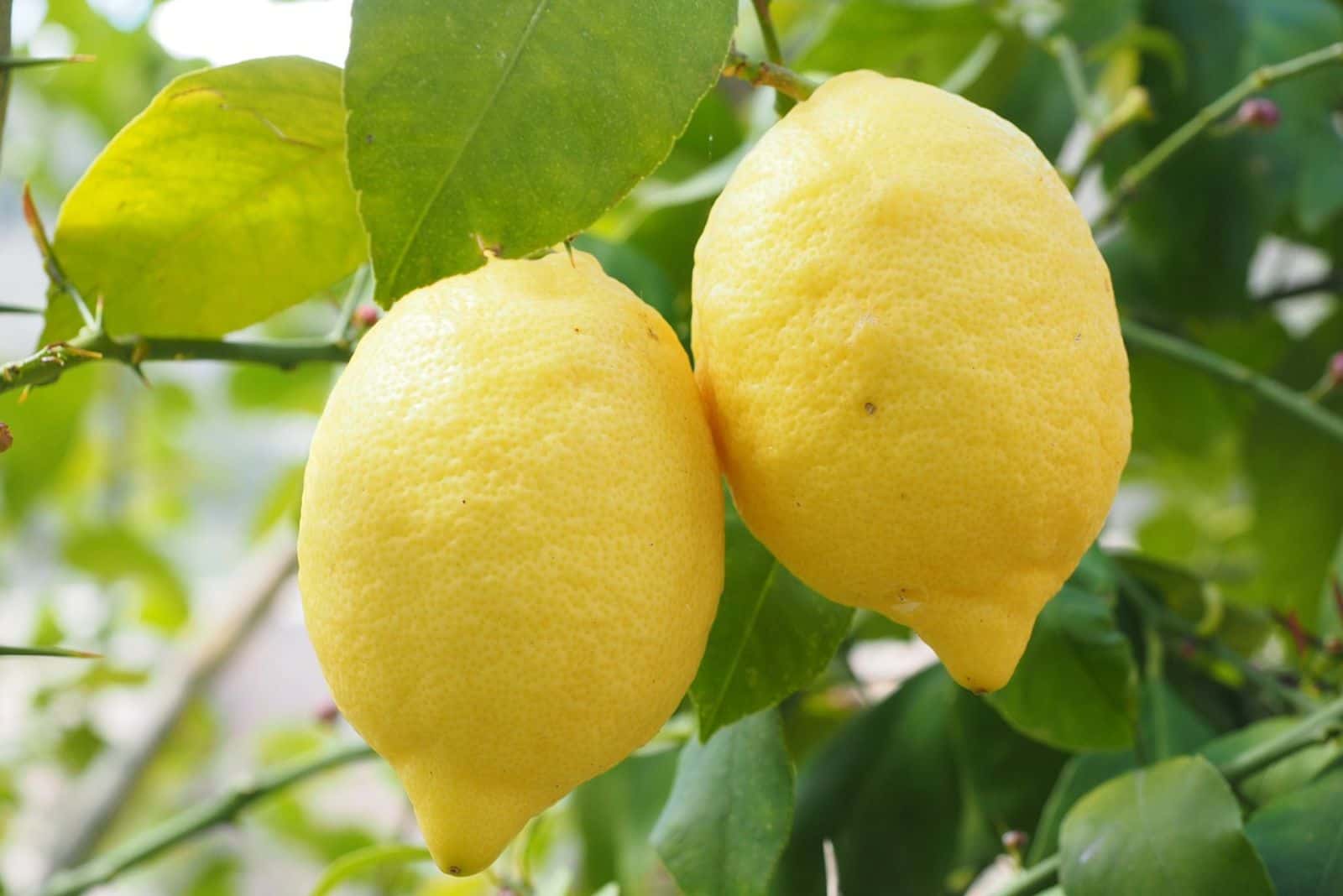There are so many lemon varieties out there that I understand the difficulty of choosing the right one.
You can choose one that produces lemons with a tart or sweeter flavor, green or yellow ones, smooth or wrinkly, etc., and the list goes on!
Below you will find 31 popular and unique lemon varieties you can add to your orchard and enjoy on a hot summer day!
1. Assam
This variety doesn’t look like your typical lemon. They’re more elongated and oblong than classic types and green-yellow in shade. Assam is slightly sweeter than other lemons and has more juice.
And once it matures to three years old and more, this tree will produce 40–50 lemons per harvest.
Fertilize it with compost or a well-balanced plant food, or you can get specialized lemon tree fertilizer and follow the instructions on the back.
It thrives in humid climates and loamy substrates and only requires water during dry spells. Expose it to full sun (at least 6–8 hours of direct sunlight).
Best grown in zones: 10–12
2. Avalon
Also known as Avon, the Avalon lemon resembles a gourd – only its bright yellow color makes it easy to distinguish the two. And what makes them stand out among other lemons is their bumpy skin.
The Avalon lemon is mostly used to make lemon juice concentrates.
Additionally, this plant is really undemanding. Expose it to full sun or part shade if you live in extremely hot climates. Water it regularly, feed it with a citrus fertilizer, and ensure it has a well-drained growing medium.
Best grown in zones: 8–11
3. Baboon
This lemon variety is large, almost as large as the average-sized hand. Its acidic taste has a hint of lime in it, while its outer appearance is characterized by yellow and slightly wrinkly, thick skin.
The Baboon lemon isn’t suitable for general use due to its sour, disinfectant-like taste, although it works well in soups.
Keep it in a location that gets at least 6–8 hours of light per day, and water it regularly. This tree is more heat-tolerant than other varieties, but it does need its moisture. Fertilize it with any lemon tree plant food, and ensure it grows in a fast-draining medium to thrive.
Best grown in zones: 9–12
4. Bearss
I love this lemon for its deep green, lime-like color and the abundance of juice. Its skin isn’t too thick, and the fruit is fairly large.
Its rind produces many natural oils, making it more aromatic and perfect for recipes that call for lemon zest.
The Bearss lemon tree flourishes in humid environments, so prepare to water it more frequently if your region is on the dry side. It also requires loamy and loose soil, plenty of sunlight throughout the day, and some citrus fertilizer to support its growth.
Best grown in zones: 8–12
5. Bonnie Brae
Bonnie Brae varieties have lemon-yellow thin skin and no seeds inside, although it resembles more of a lime than a lemon. It contains plenty of juice that you can use in various dishes.
However, Bonnie Brae never gained popularity, and there are only a few trees left today as it didn’t experience commercial success.
Unfortunately, I haven’t found a single place where you can get these lemons, although they do exist in San Diego and Southern California. But just like many other lemon trees, they have high-light and moderate watering needs. They also require a loose substrate and some citrus fertilizer from time to time.
Best grown in zones: 8–11
6. Buddha’s Hand
It baffles me how a lemon can look more like a long hot pepper than citrus! But that’s the case with this one! The vivid yellow color is the only thing that connects the Buddha’s hand lemon to this species.
The thing about this variety is that it doesn’t possess a pulp, although its aromatic and sweet rind makes up for it.
The Buddha’s hand requires less moisture than other types of lemon trees, so always check the soil before watering it. Expose it to at least 6 hours of direct light per day, plant it in fertile, well-drained soil, and feed it regularly with a citrus fertilizer.
Best grown in zones: 8–11
7. Citron
Citron is the ancestor of many citrus fruits, including lemons. (1)
Therefore, it has some of the characteristics of this species, but it doesn’t belong to it. For instance, citrons are long and ovate with yellow and knobby skin.
It has an orange-like flavor, although tangier, and is full of vitamin C, as are all other citruses.
But even though it’s not a true lemon, the citron has virtually the same needs. Expose it to at least 6–8 hours of direct light, water it during drought spells, plant it in a rich and well-drained substrate, and feed it occasionally with a lemon tree plant food.
Best grown in zones: 10–12
8. Dorshapo
If you want a fruit that looks like lemon and lime at the same time, then this is the variety for you. The shape of this type of lemon resembles the popular Eureka lemon, but its color connects it to the lime.
The Dorshapo was discovered in Brazil in the early 20th century by three explorers and is a combination of their names: Dorset, Shamel, and Poenoe.
This lemon has a sweet, mild, low-acidic flavor that comes to life in juices and cakes, especially if you add the rind.
It has moderate watering needs and requires full sun, excellent drainage, and soil rich in organic matter. Fertilize it with a lemon tree fertilizer and follow the manufacturer’s instructions.
Best grown in zones: 8–10
9. Eureka
When you think of lemons, it’s usually the Eureka or Lisbon variety that comes to mind. They’re rounded with slightly pointed edges and are bright yellow. However, the Eureka variety has a thicker skin and few seeds – sometimes none at all.
This lemon has an aromatic zest, so it’s perfect for cakes and dishes that require this flavor profile. And you can interchange it with Lisbon and Ponderosa varieties.
Understanding the lemon tree growing stages will help us care for these fruits in a better way. This way, you’ll know to water a young Eureka tree more frequently and an established one only during drought. Its other needs include fertile and fast-draining soil, full sun, and occasional fertilization.
Best grown in zones: 8–10
10. Genoa
This lemon variety looks very similar to the Eureka. However, it is slightly wider than classic lemons and can even be round in some cases. It is large and has many sections inside, although it doesn’t yield as much juice as you’d expect.
Genoa lemons are hardier than many other varieties, and you can grow them in zones 8–9. Their zest is rich in oil, making them highly aromatic. Italians use them to make their famous limoncello.
Since they come from the Mediterranean, these trees require full sun and plenty of water when they’re young (up to 2–3 times per week). Plant them in a regular citrus soil mix, and feed them 3–4 times a year.
Best grown in zones: 8–12
11. Greek Citron
The Greek citron is similar to the rough lemon due to its textured and knobby skin. Its fruit is greenish-yellow, wider at the bottom, and pointy at the top.
What makes this variety special is the fact that it grows better in containers than in the ground. It is short and doesn’t branch out much. (2)
The Greek citron is bitter and sour, so it’s not usually used for its juice but instead its peel.
It is nitpicky about its growing conditions and requires a fast-draining medium and moderate irrigation. Luckily, if you plant it in a container, you can control these conditions more easily.
All that’s left is to place the tree in a sunny location with no less than 6 hours of sunlight each day and feed it with organic fertilizer.
Best grown in zones: 8–11
12. Interdonato
The Interdonato variety is actually a hybrid between a citron and a true lemon. (3)
It is sweeter than a traditional lemon, although it’s still sour. This Italian variety is larger and more oblong than your everyday lemon.
The aromatic skin and juicy insides make the Interdonato suitable for all recipes, from making marmalades and juices to adding them to cakes, aromatizing various dishes, etc.
You can care for it like you would any other lemon. Expose it to full sun, water it during periods of drought, and plant it in a quick-draining substrate rich in organic matter. And to increase your yield, fertilize it with citrus plant food.
Best grown in zones: 8–11
13. Jambhiri
The Jambhiri lemon is also known as the rough lemon due to its bubbly, wrinkly rind. It’s usually yellow to pale orange and has almost no pulp. Therefore, you can only use its zest or use it as a rootstock.
The rough lemon is a cross between a citron and a mandarin, so it’s hardly a lemon.
It can tolerate cold quite well, although it thrives in warmer climates. Provide it with at least six hours of light each day and water it only during dry spells. Plant it in a fertile and fast-draining substrate, and don’t forget to occasionally fertilize it with citrus plant food.
Best grown in zones: 9–11
14. Lamas
The Lamas lemon variety is claimed to only exist in the UC lab, but that’s not entirely true. This variety is native to Turkey, where it’s grown to this day. It has 3–5 seeds, 34% juice, and is exported globally, but mainly to Eastern Europe. (4)
This variety has an early harvest, from November to February, and is deemed the highest quality lemon in Turkey.
Since it grows only in a small Mediterranean region in Turkey, you do have to mimic these conditions to grow it at home. Give it plenty of sunlight (8+ hours of light each day), water it moderately, and feed it with a citrus fertilizer. Finally, plant it in nutrient-rich, well-drained soil for optimal growth.
Best grown in zones: 9–11
15. Lapithkiotiki
This local Cyprian lemon resembles the Eureka in almost all aspects. They have the same rind thickness and texture, size, and even quality.
The Lapithkiotiki, named after the village Lapithos, has plenty of juice, few seeds, and high acid content. Therefore, it’s also known as the “true bitter lemon.”
Expose this plant to plenty of sunlight (we’re talking 8+ hours each day), but water it moderately to avoid overwatering. Keep it in a fertile and fast-draining substrate, and apply some citrus fertilizer from time to time.
Best grown in zones: 9–12
16. Lemonade
This slightly misleading name would make me think that these are true lemons created to be made into lemonade. However, it is believed that they are a cross between a real lemon and a mandarin orange, but this hasn’t been verified.
Lemonade lemons are perfect for lemonades. They have the bitterness of lemons and the sweetness of mandarins.
The fruit of this variety is more rounded than your classic lemon and has little to no seeds inside – a dream come true.
A Lemonade lemon tree requires plenty of warmth and sunlight to produce ample fruit (6+ hours). Plant it in a well-drained growing medium, water it regularly, and fertilize it with lemon tree fertilizer.
Best grown in zones: 9–11
17. Limetta Lemon
Limetta lemons aren’t your everyday lemons. They have a round shape and greenish skin with a taste that has a tinge of lime. And don’t mistake them for unripe lemons because they will maintain a green shade even when ripe.
Limetta lemons are generally sweeter than classic lemon varieties, although there are tart cultivars that taste as sour as your Eureka or Lisbon.
And just like with any other lemon tree, these, too, require ample sunlight and warmth to produce a bountiful harvest. Keep them in a medium with excellent drainage and water them once a week if there’s no rainfall. Additionally, you can apply some citrus fertilizer by following the instructions on the package.
Best grown in zones: 9–11
18. Lisbon
Alongside Eureka, Lisbon is one of the most popular lemon varieties out there. They’re oval-shaped and have a bright, lemon-yellow color.
Lisbon lemons are pretty much universal. They’re full of juice that’s not overly sour and have a thin zest you can use to add flavor to your dishes.
However, if your goal is to only use the rind, then this isn’t the best choice. The skin of this lemon is thin and not that rich in oils, so you’ll be better off with Genoa or Bearss.
And if you’re a great fan of lemons like I am, then growing your own varieties will pay off.
This particular type needs plenty of water, especially when young, when you should irrigate it every other day or so. Expose it to full sun, plant it in a medium with excellent drainage, and fertilize it with lemon tree plant food.
Best grown in zones: 9–10
19. Lise
The Lise is a new variety developed by the National Institute for Forestry, Agricultural and Livestock Research. It’s a Mexican lemon that yields more fruit, has 3–5 seeds, and 44–48% acidic juice. (5)
This variety stands out due to its juiciness, thin skin, few seeds, and smooth surface. And it’s fairly resistant to huanglongbing (HLB), the most serious citrus disease known as citrus greening.
The developers of this variety advise growing it in loamy substrates and sunny locations and pruning it annually.
Best grown in zones: 9–11
20. Lumia:
If you’ve ever wondered what a pear-shaped lemon would look like, you only need to glance at the Lumia variety. The bulbous rounded fruit seems too heavy for the tree, weighing it down.
This hybrid is most likely a cross between a lemon and a citron, although pomology isn’t sure about this one. (6)
Unfortunately, Lumia lemons contain almost no juice, so growers usually plant them as an ornamental fruit.
Additionally, this variety is edible, and you can use its zest for desserts or to make a delicious marmalade out of its flesh.
A Lumia lemon tree requires 8+ hours of direct sunlight and moderate watering to thrive. Plant it in loose, fertile soil with good drainage, and fertilize it occasionally with citrus plant food.
Best grown in zones: 9–11
21. Meyer
When you look at Meyer lemons, you’ll immediately notice a couple of things that distinguish them from classic lemon varieties. Their skin is smooth and thin, and the shape is more rounded.
The Meyer is thought to be a hybrid between a true lemon and a sweet orange, which gives it its signature orange-yellow shade and a tinge of sweetness. (5)
It has higher cold and heat resistance than traditional lemons due to its orange ancestry. Water it whenever its leaves are a bit droopy (about every 1–2 weeks) and expose it to 8+ hours of direct sun each day.
Plant a Meyer lemon in loamy, sandy soil with great drainage and feed with a slow-release fertilizer.
Best grown in zones: 8–11
22. Otaheite
This lemon is rounded and orange, resembling mandarins or true oranges. The fruit grows in clusters, and its flesh is filled with tiny seeds.
If you want a taste of lemon but can’t handle the acidity, then this is the variety for you. The Otaheite is also called the “acidless orange” as it lacks the sourness of traditional lemons.
There are dwarf varieties you can grow in containers or simply plant any type outside. It needs a fertile and loamy medium, excellent drainage, and a well-balanced fertilizer.
Expose it to full sun and water it approximately once a week – although this depends on the temperature and light exposure.
Best grown in zones: 10–13
23. Perrine
This Genoa lemon and a West Indian lime was developed by W. T. Swingle and USDA associates in 1909. (6)
The Perrine lemon is much smaller and more rounded than the other varieties. It also has patches of lime-green color when ripe, which distinguishes it from true lemons.
This hybrid has thin, slightly knobby skin, plenty of high-acid juice, and aromatic zest despite its thin skin. Therefore, you can use it in desserts, soups, fish and meat dishes, and more.
Plant it in fertile, well-draining, mildly acidic soil and water it when you notice that the leaves are starting to droop – once or twice a week when there’s no rainfall. Expose it to 6–8 hours of direct sunlight, and feed it with an all-purpose fertilizer.
Best grown in zones: 8–11
24. Pink Variegated
The Pink variegated lemon has yellow skin streaked with green lines.
But why is it then called pink variegated, you may wonder? It’s because its flesh is pink and resembles a grapefruit. And once you squeeze its juice, it’s actually clear with only the semblance of a pink hue.
This fruit is a result of a natural mutation and resembles a melon. It’s prized for its variegated stripes, which is why its dwarf cultivars are mostly grown indoors as ornamentals.
Plant it in a slightly acidic growing medium with good drainage and water the established plants every 10 days or so, depending on the temperature. Expose the tree to full sun and fertilize it with lemon plant food.
Best grown in zones: 8–11
25. Ponderosa
I have a Ponderosa lemon in my garden because I researched it and discovered that it is one of the best varieties to grow in Florida. From my experience, I can tell you that the fruit can get large (larger than my hand sometimes) and has thick, textured skin.
It is yellow to yellow-orange in shade and contains plenty of juice you can use for both mains or desserts.
The Ponderosa lemon is presumed to be a hybrid between a lemon and a citron. It occurred as a chance seedling grown by G. Bowman in Maryland. (7)
I grow this lemon in full sun and a raised garden bed filled with topsoil and compost to increase drainage. I also fertilize it 3 times a year with a slow-release fertilizer and water it 2–3 times a week during its growing season or less if there’s been plenty of rain.
Best grown in zones: 9–11
26. Primofiori
This variety is similar to Lisbon in terms of its size and color, although it is more oval. It also has a more pronounced tip.
The flavor and acid content of this lemon variety makes it suitable for any dish, from desserts to main courses. And its high acidity allows you to use it as an acidifying agent.
To avoid lemon tree leaves curling and deal with this issue the right way, you need to ensure that this plant gets full sun and water only when the foliage starts to curl. This variety requires less moisture than other types of lemons, although you should double it during fruiting.
Plant the Primofiori in a mildly acidic substrate with good drainage and high organic content. And don’t forget to fertilize it from time to time.
Best grown in zones: 8–12
27. Santa Teresa
Another Italian hybrid variety is Santa Teresa. This type is famous for its rough skin, few seeds, and high juice content. The Santa Teresa is deemed to have the most “lemony” flavor of all the varieties and is usually used to make limoncello.
But what makes it truly special is its resistance to citrus diseases, so you won’t have to worry about citrus green or other common infections ruining your crop.
This type of lemon is perfect for containers, especially if you get a dwarf variety. You can grow it indoors as an ornamental or to harvest its fruit.
Simply plant it in loamy soil with good drainage, expose it to 8+ hours of sun, water it once the topsoil dries out, and feed it with a lemon tree fertilizer.
Best grown in zones: 8–11
28. Verna
Verna lemons resemble the Eureka or Lisbon variety, although they are frequently larger and wider. Their yellow skin is thicker or thinner, depending on the cultivar.
The fruit contains plenty of slightly sweet juice, so it’s perfect for lemonade!
This species has a long growing period, so you’ll be able to harvest it in spring and early summer up until July and then again in August and September.
Plant it in well-drained, sandy, and loamy soil rich in organic material and feed it with any citrus fertilizer. Keep this lemon tree in a location that gets at least 6–8 hours of sun a day.
They require much more water than other varieties, so make sure to irrigate them 4–5 times each week – although this depends on the growing conditions.
Best grown in zones: 9–12
29. Villafranca
When you see and taste this lemon, you’ll think it’s a Eureka. However, there’s a difference between the two – their growing and fruiting seasons.
The Villafranca ripens in winter, giving you a sense of the tropics during the cold months.
Plant it in a well-drained, mildly acidic medium rich in nutrients and fertilize it like any regular lemon. Water it just like the Eureka variety: 2–3 times a week when young and during periods of drought when established. Finally, expose it to 6–8 hours of sun, and it’ll thrive.
Best grown in zones: 8–11
30. Volkamer
I was surprised to hear that Volkamer lemons are only a quarter true lemon if my math serves me right. They’re a hybrid between a citron and a sour mandarin. (8)
What distinguishes this lemon from many other varieties is its oval, not elongated shape, and the fact that it doesn’t have the so-called nose. It has a sour orange taste, and its skin is dark yellow to light orange.
This variety can adapt to various conditions and won’t mind if its soil or temperature requirements aren’t met to the fullest.
On the other hand, it thrives in well-drained, fertile substrates, mild temperatures, and full sun. Fertilize it 3–4 times a year and water established trees only during long dry spells.
Best grown in zones: 8–12
31. Yen Ben
The Yen Ben lemon is a close cousin to the Lisbon variety, although it produces juicier and more abundant fruit.
What makes this lemon special is its ability to maintain its flavor during storage. It also has 2 seeds on average.
This variety of lemon needs plenty of water, 3–4 times a week when young and less frequently when it’s established. Plant it in nutrient-rich, well-drained soil, provide it with at least 6–8 hours of light per day, and fertilize it 2–3 times a year with a citrus fertilizer.
Best grown in zones: 8–12
Final Thoughts
This article has provided you with some amazing lemon varieties you can plant in your indoor or outdoor garden.
Use them as ornamentals or grow them for their fruit. Each of these varieties has something that makes them special, so choose wisely.
Until next time!
Research:
1. Wu, G. A et al. (2018). Genomics of the Origin and the Evolution of Citrus. Nature.
2. Volkamer, J. C. (1714). Nurenbergische Hesperides, vol. 2.
3. Interdonato Lemon. UC Riverside, Givaudan Citrus Variety Collection at UCR.
4. Nicolau, A. I. (2014). The Case of Lemons in Caves: A Sustainable Storage System for Turkish Lemons in Global Safety of Fresh Produce: A Handbook of Best Practice, Innovative Commercial Solutions and Case Studies. Cambridge: Woodhead.
5. Faber, B. (2021). A New Lemon in Town. University of California Agriculture and Natural Resource Blog.
6. Lumia lemon hybrid. UC Riverside, Givaudan Citrus Variety Collection at UCR.
7. Improved Meyer Lemon. UC Riverside, Givaudan Citrus Variety Collection at UCR.
8. Perrine Lime Hybrid. UC Riverside, Givaudan Citrus Variety Collection at UCR.
9. Ponderosa Lemon Hybrid. UC Riverside, Givaudan Citrus Variety Collection at UCR.10. Volkamer Lemon. UC Riverside, Givaudan Citrus Variety Collection at UCR.

